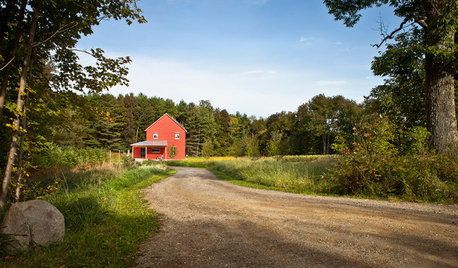Fixing Chlorosis: Soil as the issue not nutrients (pics)
tweedbunny
16 years ago
Related Stories

FARM YOUR YARDHow to Get Good Soil for Your Edible Garden
The nutrients in your soil feed the plants that feed you. Here are tips on getting it right — just in time for planting season
Full Story
GARDENING GUIDESGardening Solutions for Heavy Clay Soils
What’s a gardener to do with soil that’s easily compacted and has poor drainage? Find out here
Full Story
GARDENING GUIDESNew Ways to Think About All That Mulch in the Garden
Before you go making a mountain out of a mulch hill, learn the facts about what your plants and soil really want
Full Story
GARDENING GUIDESLearn the Secret to Bigger and Better Roses
Grow beautiful roses using both ordinary and unusual soil amendments
Full Story
FALL GARDENING5 Ways to Put Fall Leaves to Work in Your Garden
Improve your soil and yard the organic way with a valuable garden booster that grows on trees
Full Story
THE ART OF ARCHITECTUREFinding the Perfect Home for a New House
Sun, soil, water, topography and more offer important cues to siting your house on the land
Full Story
FARM YOUR YARDHow to Farm Your Parking Strip
Get an up-close look at a thriving street-side edible garden, one of many sprouting up in Seattle
Full Story
GARDENING GUIDESWhat's Wrong With My Plant? Leaves Often Hold the Clues
Learn how to identify common plant ailments by reading their leaves
Full Story
FRONT YARD IDEASBefore and After: Front Lawn to Prairie Garden
How they did it: Homeowners create a plan, stick to it and keep the neighbors (and wildlife) in mind
Full Story
INSPIRING GARDENSFrom Concrete Lot to Gracious Organic Garden in Seattle
Plants, pests and even weeds have a place in this landscape, which offers an edible bounty and a feast for the eyes
Full Story






philmont_709n2
rcnaylor
Related Discussions
Organic Ways to Fix Issues with My Soil
Q
Nutrient deficiency or cold wet soil?
Q
Alkaline or carbonate-rich soils and their nutrient problems
Q
Yellow veins, falling leaves. Is it light, chlorosis or fert issues?
Q
tweedbunnyOriginal Author
Fledgeling_
Fledgeling_
lou_spicewood_tx
Fledgeling_
jean001
tweedbunnyOriginal Author
mad_gallica (z5 Eastern NY)
lou_spicewood_tx
Dibbit
Fledgeling_
lou_spicewood_tx
rcnaylor
goodhors
scotjute Z8
Dibbit
tweedbunnyOriginal Author
rcnaylor
greenhaven
tweedbunnyOriginal Author
Fledgeling_
Fledgeling_
greenhaven
rcnaylor
Fledgeling_
rcnaylor